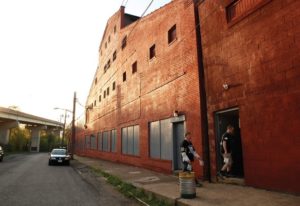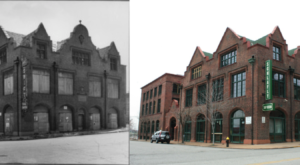Back

Blog
Bottoms Up: Craft Breweries Help Spark Revitalization in Inner Cities

The craft beer industry has expanded rapidly in recent years. Between 2009 and 2016, the number of craft breweries expanded from 1,596 to 5,234, according to the Brewers Association. The number of craft breweries increased by 16.6 percent between 2015 and 2016 alone.
It’s not just hop lovers who are benefiting from the trend; the cities that are home to these breweries are seeing the effects as well. Craft breweries provide over 130,000 jobs and play a major role within the local economies of many urban communities.
Given that brewing requires considerable physical space, cities with underutilized industrial real estate have often proven a good match. Many of these buildings have the strong floor plates and high ceilings brewers need for their equipment, as well as high-capacity water and sewer lines that brewers need as they increase production. In many of these cities, the comparative availability of this type of real estate creates relatively cheap rent, helping offset the brewer’s more expensive capital costs.
This is what attracted Dan Kopman and Tom Schlafly to St. Louis. The pair opened Missouri’s first new brewpub since Prohibition—the Schlafy Tap Room—in 1991 in the old Swift Printing Plant building in the Downtown West neighborhood. “It was a neighborhood that had been left to rot away,” says Michael Allen, a St. Louis architect. “It was an old warehouse district without any lights on,” Kopman recalls. “Nobody was here. All the buildings were vacant and abandoned.”
The two adjoining buildings, both on the National Register of Historic Places, required extensive renovations. Originally built in the early 1900s, the buildings had been abandoned since the printing plant moved out in 1969 and were nearly in ruin by the time Kopman and Schlafly took ownership.

Restoring the buildings to house a brewery was a huge undertaking, but the investment has made the brewery an important component of the broader neighborhood’s economic revitalization. Other businesses have opened in vacant storefronts, and residents have started to move back to Downtown West. “There’s still a lot of work to be done in that neck of the woods, and there’s still rehabbing going on,” says Allen. But he says none of it would be happening if Schlafly hadn’t purchased the building.
Breweries in Pittsburgh and Cleveland have created similar impact.
Scott Smith opened East End Brewing Company in Pittsburgh’s Homewood North neighborhood. When East End Brewing opened its doors in December 2004, Homewood North was considered one of the more dangerous areas of the city. Smith says his decision to open the brewery in Homewood North, like many other aspiring brewers who locate in inner city neighborhoods, was based purely on economics. Smith was working with limited capital at the time so he needed to find “an inexpensive place to keep our overhead low.”
East End Brewing became a draw for other businesses. A community apiary, Burgh Bees, transformed a waste-strewn vacant lot into a sanctuary for training residents to become beekeepers. A business incubator opened on Susquehanna Street in 2013 and now offers low-cost space for makers and specialty manufacturers to grow their businesses. The incubator currently has 20 tenants and occupies three of the building’s five floors. One of those businesses, Bones and All, which designs and builds furniture and home goods, grew out of the incubator into its own space in Homewood.
Even the University of Pittsburgh is getting on board. In December, Pitt inked a deal to lease space in a building that once served as a Westinghouse manufacturing facility. The university will offer hands-on training in advanced machine tools and computer-aided manufacturing, an initiative intended to provide disenfranchised residents with the skills needed to obtain high-quality jobs. The building also houses visual artists, a construction company, and several small companies that specialize in ceramic and wood artistry.
All of this activity has put Homewood North on the path to revitalization. Violent crime has been cut in half and Pittsburgh Magazine recently called Homewood North one of the city’s best hidden neighborhoods, citing East End Brewing as one of the area’s go-to spots.
Similarly in Cleveland, Pat Conway’s Great Lakes Brewing was an early example from the craft brewery-turned-urban revitalization trend. Great Lakes Brewing opened in the downtown Ohio City neighborhood in 1988, at a time when the neighborhood was best known for its abandoned buildings and boarded up storefronts. Over the years, the brewery expanded and other businesses started to open up nearby. The city invested in the neighborhood as well, repaving streets and renovating the West Side Market where more than 100 local vendors now sell an incredible range of food and other goods.
Other breweries have also opened in the area, creating a fledgling “brewery district.” Platform Brewery opened in 2014. Forest City Brewery and Brick & Barrel both opened in 2015. Hansa House opened its doors last year. Margo Metzger, director of the North Carolina Craft Brewers Guild, elaborates on the community impact of breweries: “I’ve spent my whole life here, and suddenly, you see breweries in forgotten Eastern North Carolina towns such as Rocky Mount and Tarboro,” she says. “It gives people a public house and a reason to want to live there. But more importantly, it makes people feel like they’re in a relevant place. It’s something new, beyond the old story of a fading town they’ve heard for decades. It’s a powerful, kickstarting force, a spark that I’ve seen time and time again.”
The decision-making process which leads brewers to locate in a particular neighborhood is proof of concept for ICIC’s foundational research into the competitive advantages of the inner city. For each of these brewers, the neighborhood’s existing assets and opportunities provided the foundation for business growth, and, in turn, the businesses were part of the bedrock of amenities that led to further neighborhood investment.
Our blog will be returning to the important topic of “fermentation-driven” economic development in the coming weeks. Stay tuned!
